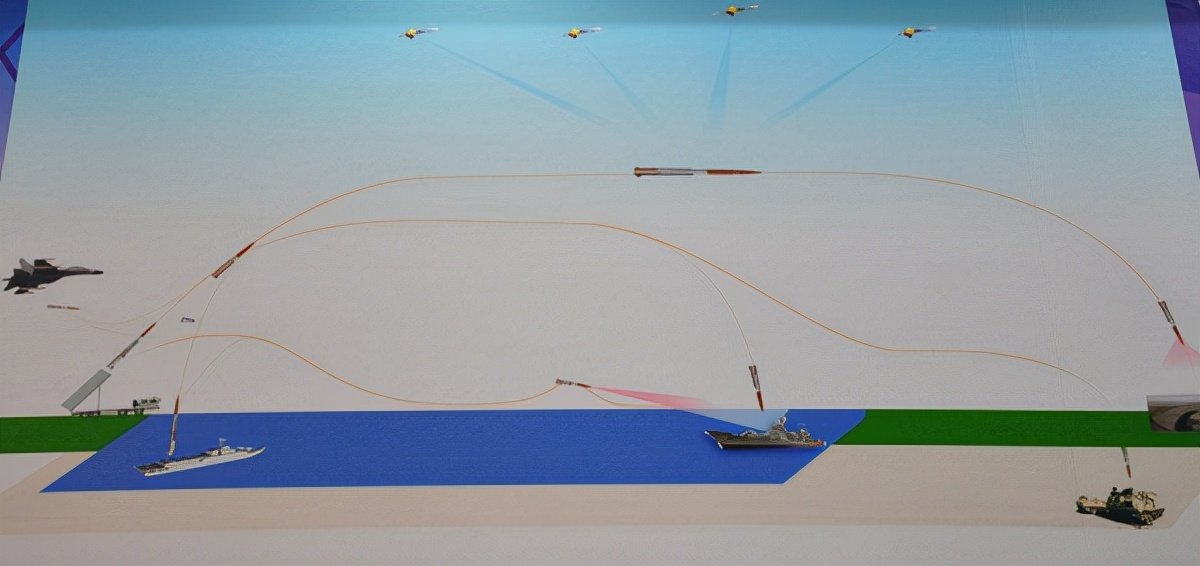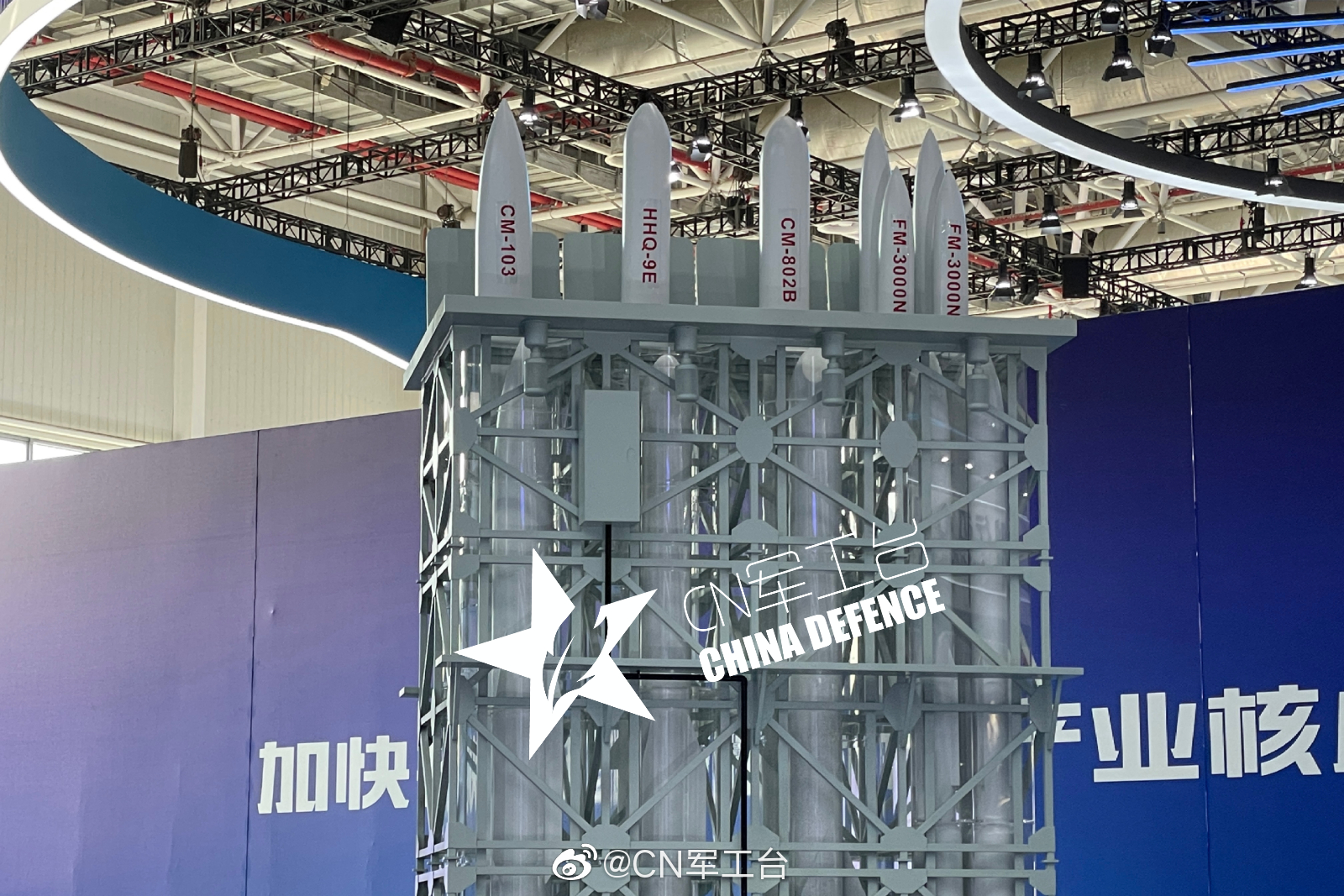You are using an out of date browser. It may not display this or other websites correctly.
You should upgrade or use an alternative browser.
You should upgrade or use an alternative browser.
2021 Zhuhai Airshow Naval Systems
- Thread starter by78
- Start date
by78
General
This is the second thread now that you posted the same photos with the same copy-pasted amateurish claim that HD-1 is a small and light missile that can be carried by the JF-17, a fighter with a MTOW of 12t.
I will remind you that it has been established several years now that HD-1 has a launch weight of 2,200kg, which is comparable in weight to the YJ-18. I am asking you for the second time to provide a source for those claims.
I'll remind you that the launch weight of 2200kg refers to the vehicle-launched variant, which includes a booster. There are two other variants: one air-launched and one ship-launched. The air-launched variant has no booster and weighs 1200kg. It can be released from altitudes of 7000m to 12000m at speeds of 0.8ma to 0.95ma.
I'm surprised you didn't know this.



Last edited:
So you made up the part about the JF-17? Thanks, that's what I suspected all along.I'll remind you that the launch weight of 2200kg refers to the vehicle-launched variant, which includes a booster. There are two other variants: one air-launched and one ship-launched. The air-launched variant has no booster and weighs 1200kg. It can be released from altitudes of 7000m to 12000m at speeds of 0.8ma to 0.95ma.
I'm surprised you didn't know this. This is the second time now that despite your obvious lack of research, and despite the provided by HDBP Ltd. clearly showing that it's air-launch capable, you amateurishly claim that launching the missile from JF-17 represents some kind of nay impossible feat. I'll also remind you that JF-17 can carry more than 3500kg of payload, which is well north of 1200kg.



Dispense with the personal attacks, both of you.
===
The technical arguments on both sides make fair points.
While it is technically true that a 1.2 ton weapon can be carried by JF-17, it also remains that we have no definitive proof of it yet.
Specifically, we do not know what the weapons stations are rated for in terms of weight -- though JF-17 can carry 1,100 litre external fuel tanks on the inboard stations.
It's a shame that what could have been a useful discussion has become a petty exchange because you both wanted to have a go at each other.
===
The technical arguments on both sides make fair points.
While it is technically true that a 1.2 ton weapon can be carried by JF-17, it also remains that we have no definitive proof of it yet.
Specifically, we do not know what the weapons stations are rated for in terms of weight -- though JF-17 can carry 1,100 litre external fuel tanks on the inboard stations.
It's a shame that what could have been a useful discussion has become a petty exchange because you both wanted to have a go at each other.
Export VLS. The missiles are labelled. Note the quad-packed FM-3000N.

I wonder a little bit as to the accuracy of the missiles.
The missile designated as HHQ-9E certainly does not look like any reasonable HQ-9 variant that we know exists (or that we would expect), and frankly that missile itself looks more like a cruise missile or ASROC type weapon in terms of geometry.
The quad packable FM-3000N is not unexpected -- when the FM-3000 for land was originally developed, I thought at the time that it could make for a reasonable quad packable MR SAM for naval use.
If that is indeed FM-3000N (and not also mis-labelled), I wonder what the effective range of it is, given the missile's fuselage, control surfaces and propulsion section all look quite different from the original FM-3000.
FWIW, 1,100 liters of kerosene amounts to 900kg.Specifically, we do not know what the weapons stations are rated for in terms of weight -- though JF-17 can carry 1,100 litre external fuel tanks on the inboard stations.
by78
General
I wonder a little bit as to the accuracy of the missiles.
The missile designated as HHQ-9E certainly does not look like any reasonable HQ-9 variant that we know exists (or that we would expect), and frankly that missile itself looks more like a cruise missile or ASROC type weapon in terms of geometry.
The quad packable FM-3000N is not unexpected -- when the FM-3000 for land was originally developed, I thought at the time that it could make for a reasonable quad packable MR SAM for naval use.
If that is indeed FM-3000N (and not also mis-labelled), I wonder what the effective range of it is, given the missile's fuselage, control surfaces and propulsion section all look quite different from the original FM-3000.
It might be possible that they had CM-103 and HHQ-9E flipped. Do we know what CM-103 looks like?
lcloo
Major
There are very little public information on CM-103. This is the 2018 September news on J16D...
Via Google translate:-
Even with the maximum load of electronic warfare equipment, the J-16 will use six of its 12 external points for carrying weapons. At present, there are three different types of anti-radiation missiles (ARM) designed for long-range enemy radar. With a range of 100 km, the CM-103 missile is accurate enough to hit naval and ground targets with an 80-kilogram warhead. There is also a home-grown copy of the Russian Kh-31P missile, the YJ-91, which has a slightly longer range and also has an anti-ship role. Finally, there is the LD-10 ARM missile from the PL-12 anti-aircraft missile. Of course, the J-16D can carry most of the other weapons that basic fighter jets can carry.
即使拥有最大负载的电子战装备,J-16也会使其12个外挂点中的6个自由携带武器。目前,我国有三种不同类型的反辐射导弹(ARM),设计用于远距离敌方雷达。CM-103导弹的射程为100公里,它足够精确,可以用80公斤重的弹头击中海军和地面目标。还有一枚本土开发的俄罗斯Kh-31P导弹副本,YJ-91,射程略长,也有反舰的作用。最后,就是来自PL-12防空导弹的LD-10 ARM导弹。当然,J-16D可以承载基本的战斗机可以携带的大部分其他武器。
Also from the same article dated September 2018 - on J16D
The J-16D has removed the 30mm gun and infrared sensor, after all, it is not an aircraft intended for short-range air combat! Instead, it has several new antennas and electronic warfare devices on its body. The J-16D's head antenna cover has been redesigned to be suitable for more advanced AESA radars. Most importantly, the new electronic warfare pod is mounted on the wing tip, similar to the American ALQ-218 electronic support measuring pod added to the EA-18G Growler wingtip. These are electromagnetic sensors that analyze radar frequencies and help determine the location of radar launchers, which can be useful for interfering with radars and targeting them for destruction. It also carries two to three jamming pods under the wings and fuselage, each optimized for a different radar frequency. Of course, these jammers can also use AESA technology.
J-16D已经拆除了30毫米的机炮和红外传感器,毕竟它可不是一架打算参加短程空战的飞机!相反,其机身上设有多个新的天线和电子战装置。J-16D的机头天线罩经过重新设计,可能适用于更先进的AESA雷达。最重要的是,新的电子战吊舱被安装在翼尖上,类似于EA-18G“咆哮者”翼尖上加装的美国ALQ-218电子支撑测量吊舱。这些都是电磁传感器,可以分析雷达频率并帮助确定雷达发射设备的位置,这些数据对于干扰雷达以及瞄准它们进行破坏非常有用。另外,它还会在机翼和机身下方携带两到三个干扰吊舱,每个吊舱都针对不同的雷达频率进行优化。当然了,这些干扰器也可以使用AESA技术。
Via Google translate:-
Even with the maximum load of electronic warfare equipment, the J-16 will use six of its 12 external points for carrying weapons. At present, there are three different types of anti-radiation missiles (ARM) designed for long-range enemy radar. With a range of 100 km, the CM-103 missile is accurate enough to hit naval and ground targets with an 80-kilogram warhead. There is also a home-grown copy of the Russian Kh-31P missile, the YJ-91, which has a slightly longer range and also has an anti-ship role. Finally, there is the LD-10 ARM missile from the PL-12 anti-aircraft missile. Of course, the J-16D can carry most of the other weapons that basic fighter jets can carry.
即使拥有最大负载的电子战装备,J-16也会使其12个外挂点中的6个自由携带武器。目前,我国有三种不同类型的反辐射导弹(ARM),设计用于远距离敌方雷达。CM-103导弹的射程为100公里,它足够精确,可以用80公斤重的弹头击中海军和地面目标。还有一枚本土开发的俄罗斯Kh-31P导弹副本,YJ-91,射程略长,也有反舰的作用。最后,就是来自PL-12防空导弹的LD-10 ARM导弹。当然,J-16D可以承载基本的战斗机可以携带的大部分其他武器。
Also from the same article dated September 2018 - on J16D
The J-16D has removed the 30mm gun and infrared sensor, after all, it is not an aircraft intended for short-range air combat! Instead, it has several new antennas and electronic warfare devices on its body. The J-16D's head antenna cover has been redesigned to be suitable for more advanced AESA radars. Most importantly, the new electronic warfare pod is mounted on the wing tip, similar to the American ALQ-218 electronic support measuring pod added to the EA-18G Growler wingtip. These are electromagnetic sensors that analyze radar frequencies and help determine the location of radar launchers, which can be useful for interfering with radars and targeting them for destruction. It also carries two to three jamming pods under the wings and fuselage, each optimized for a different radar frequency. Of course, these jammers can also use AESA technology.
J-16D已经拆除了30毫米的机炮和红外传感器,毕竟它可不是一架打算参加短程空战的飞机!相反,其机身上设有多个新的天线和电子战装置。J-16D的机头天线罩经过重新设计,可能适用于更先进的AESA雷达。最重要的是,新的电子战吊舱被安装在翼尖上,类似于EA-18G“咆哮者”翼尖上加装的美国ALQ-218电子支撑测量吊舱。这些都是电磁传感器,可以分析雷达频率并帮助确定雷达发射设备的位置,这些数据对于干扰雷达以及瞄准它们进行破坏非常有用。另外,它还会在机翼和机身下方携带两到三个干扰吊舱,每个吊舱都针对不同的雷达频率进行优化。当然了,这些干扰器也可以使用AESA技术。
Last edited:
Very interesting photo. I did not know the C802 could be vertically launched and did not know HQ-9 was offered for export.Export VLS. The missiles are labelled. Note the quad-packed FM-3000N.


